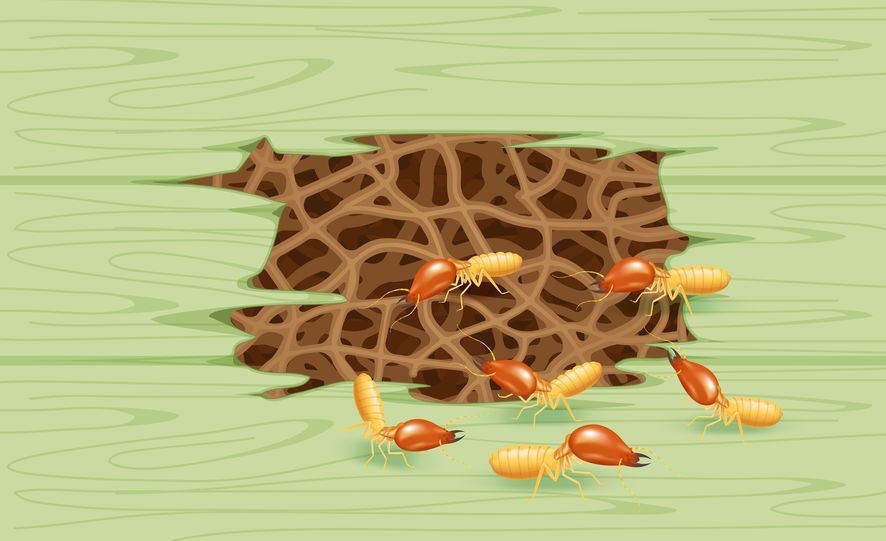Most members of a termite colony cannot survive for very long when they are outside in the open. This is because they do not have a protective outer layer to keep the moisture inside their bodies, so when they are outside of a termite tunnel, they dehydrate very quickly. To counteract this issue, termites (subterranean termites in particular) will build mud tubes to travel from their colonies across impenetrable materials.
The different types of mud tubes
Mud tubes are mainly used by subterranean termites, and these termites use different tubes for different purposes. One of the most widely used tubes is the scouting tube. As the name suggests, this tube is used to explore areas above ground that would otherwise be unreachable. For example, if a termite runs into the foundation of the home, and it senses that there is wood above it, it will use a scouting tube to check. These tubes are fragile and they are abandoned after they are used.
If at the end of a scouting tube, termites manage to find some wood, they will start working on a transport tube. These tubes are much wider and sturdier, because hundreds or even thousands of termites will use it to travel back and forth carrying cellulose.
There are two other types of tubes, with one being fairly rare, and the other being more of a mud structure. The first is the vertical or hanging tube, which will connect two horizontal planes that have no support structure between them. These tubes hang down from one plane to the other, and they can sometimes be found in crawl spaces. The fourth type of tube is the mud castle, which can reach widths of up to one foot. These castles serve as the staging ground where swarmers or winged termites prepare before flying out.
What to do if you spot mud tubes on your property
Spotting mud tubes in your home is one of the main ways to detect a subterranean termite infestation. If you do happen to come across one of these structures, it’s best to leave it alone and call over a pest control pro who will be able to inspect it and use that information in the control process. For more information about how termite infestations start and how they are controlled, or if you have a termite infestation in your home, contact us today.

